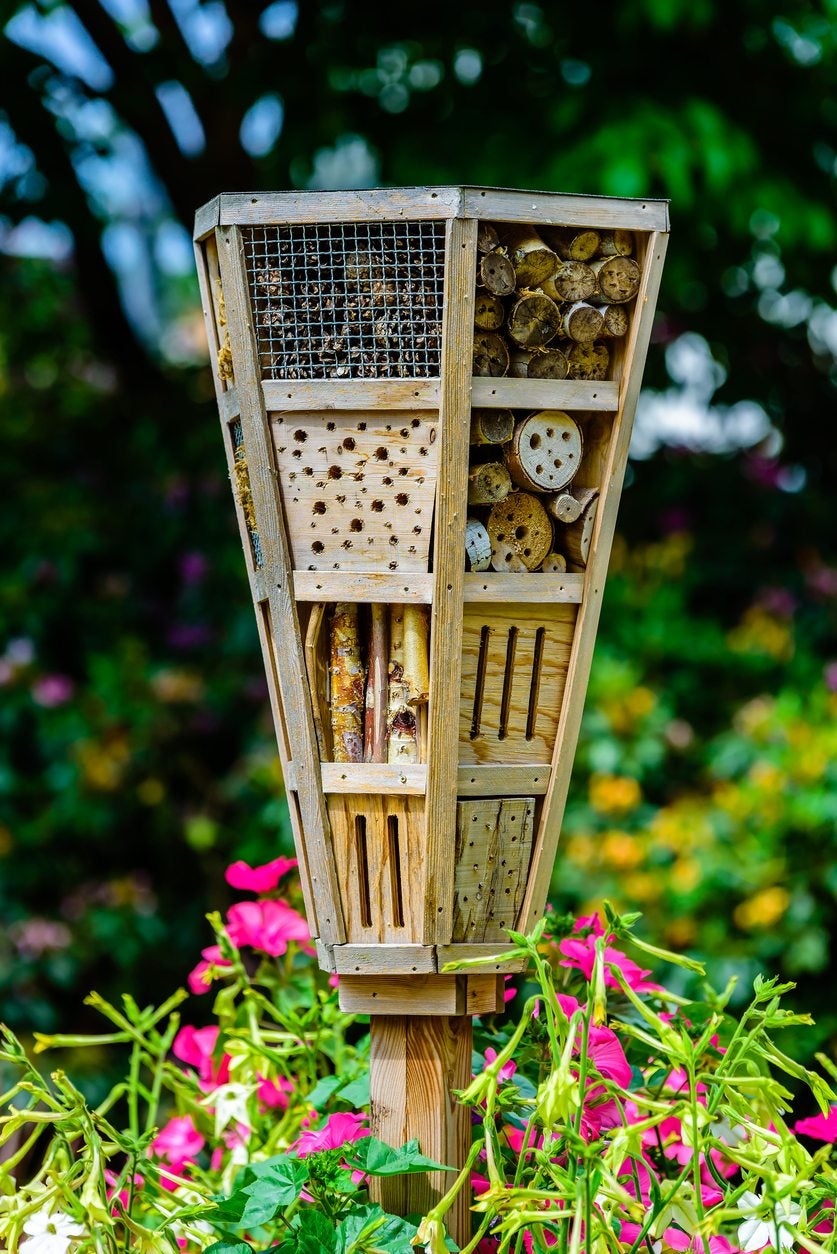Creating Bug Gardens: Attracting Beneficial Insects For A Garden


Gardeners have lots of good reasons to try to lure beneficial insects for a garden. But how to do it? Calling them or whistling softly rarely works. You’ll want to use insect friendly garden plants to start creating bug gardens. Read on for insect friendly garden ideas, including information about how to make an insect garden.
Beneficial Insects for a Garden
When people talk about insects, they often have mosquitoes or flies in mind, bugs that you wish were not in the yard. But many bugs help your plants thrive. In fact, beneficial insects for a garden are a gardener’s best friends. Some insects, like bees and butterflies, pollinate flowers. Other beneficial insects chow down on destructive bugs like aphids and scale insects. Another group of insect, termed parasitoids, live on or inside an insect pest, killing it as they feed. As gardeners learn about and accept all the good things beneficial bugs accomplish, they start searching for insect friendly garden ideas. How to make insects feel welcome? You’ll want to start creating bug gardens by selecting insect friendly garden plants.
Insect Friendly Garden Plants
Most plants attract insects. While many species have limited appeal, some plants are wildly popular with the most beneficial insects for a garden. This includes bees, ladybugs, ground beetles and hoverflies. If you plant the flowers, herbs and weeds these insects love the most, you increase dramatically your chance of having a population of beneficial insects in your garden. For instance, try the following and then stand back and watch the bugs arrive:
- Plant dill and gazania to attract ladybugs.
- Include nasturtium to attract ground beetles and spiders.
- Yarrow will summon more ladybugs and hoverflies.
- Clover is great for attracting helpful bees, so welcome these plants.
Another great tip for attracting beneficial insects for a garden is to plant native flowers. They attract a wider range of beneficial bugs than cultivars do. If you have a pond, you can offer many additional habitats, and a compost heap does the same. Above all, don’t use pesticides or you’ll kill the very bugs you are hoping to see.
Creating Bug Gardens and Bug Hotels
Could humankind survive in a world without pollinator insects? These useful insects provide incalculable services to the globe by crop pollination. Some three-quarters of the world’s flowering plants and about over a third of food crops depend on insect and animal pollinators to reproduce. Bees are the most important pollinator bug. They are so valuable that more and more gardeners are welcoming them into their backyards with bug hotels. Bug hotels vary greatly in form, depending on the imagination and creativity of the gardener. But all share the same purpose: inviting these pollinator insects to come and to stay. Start your bee hotel by drilling holes into wood for solitary bees to seek refuge. Place the hotel facing south to assure warmth. After a while, your backyard should be humming with activity. Check out this mason bee hotel tutorial for a great example of one of these welcoming spaces.
Sign up for the Gardening Know How newsletter today and receive a free copy of our e-book "How to Grow Delicious Tomatoes".

Teo Spengler is a master gardener and a docent at the San Francisco Botanical Garden, where she hosts public tours. She has studied horticulture and written about nature, trees, plants, and gardening for more than two decades, following a career as an attorney and legal writer. Her extended family includes some 30 houseplants and hundreds of outdoor plants, including 250 trees, which are her main passion. Spengler currently splits her life between San Francisco and the French Basque Country, though she was raised in Alaska, giving her experience of gardening in a range of climates.